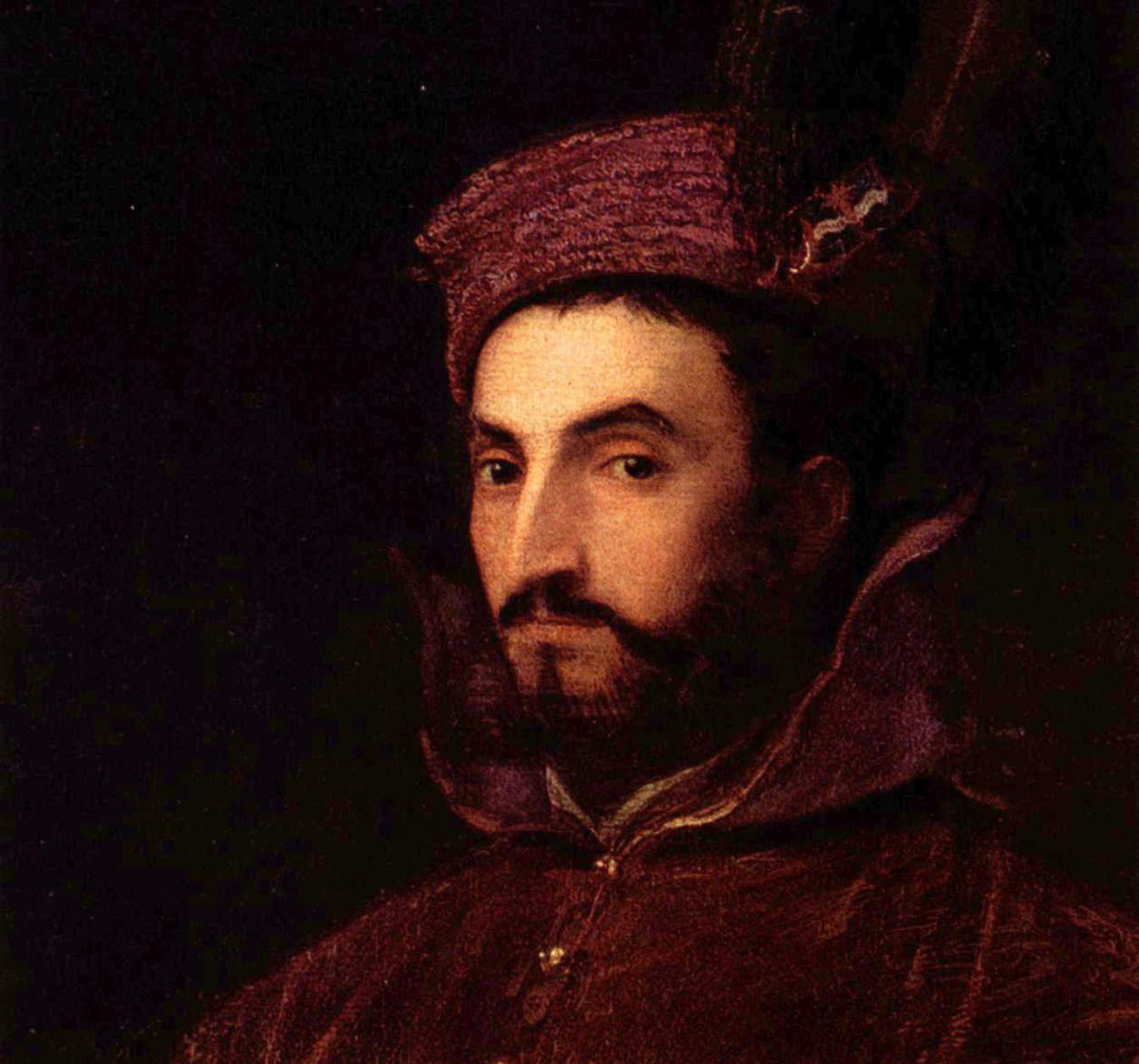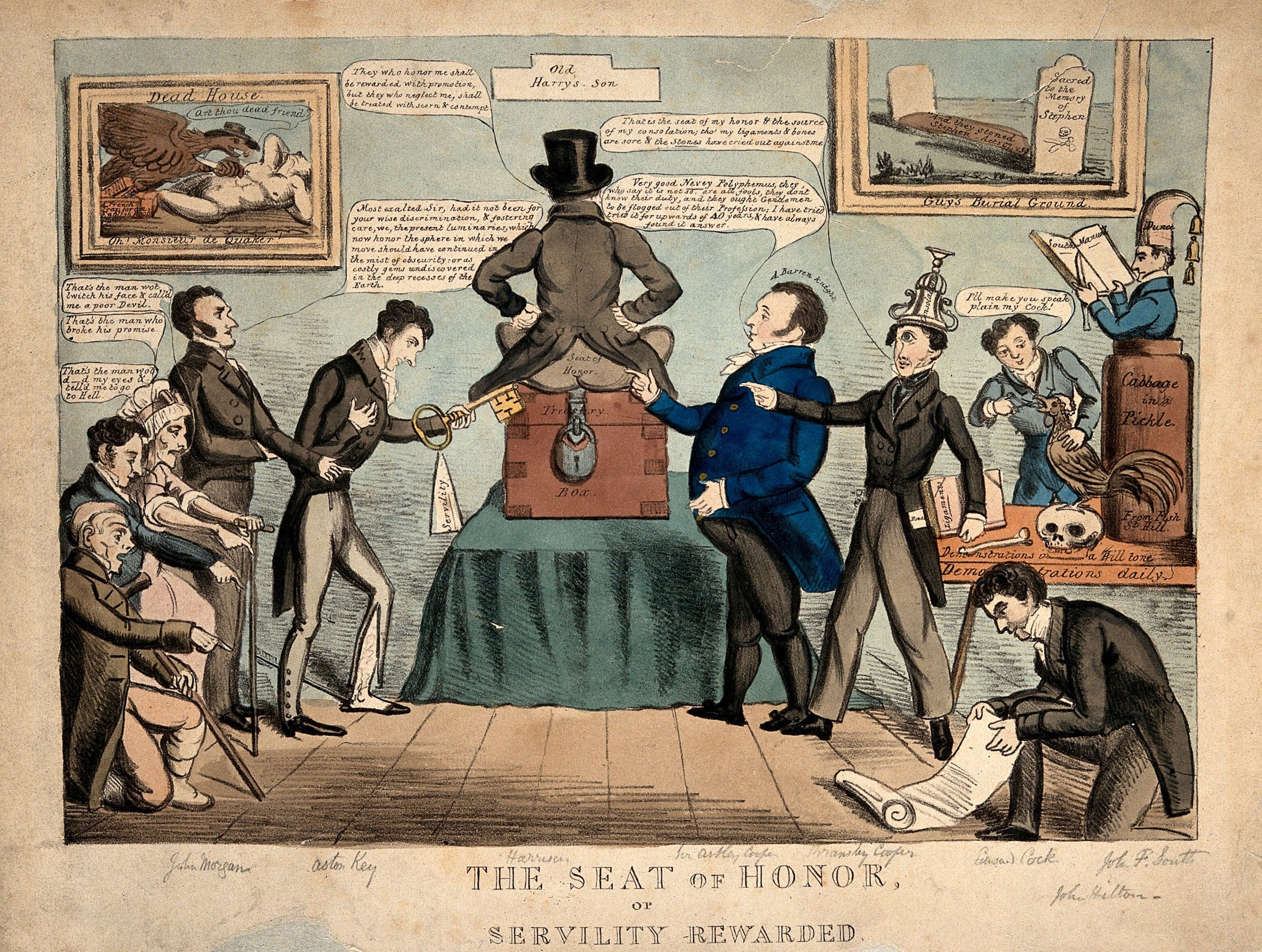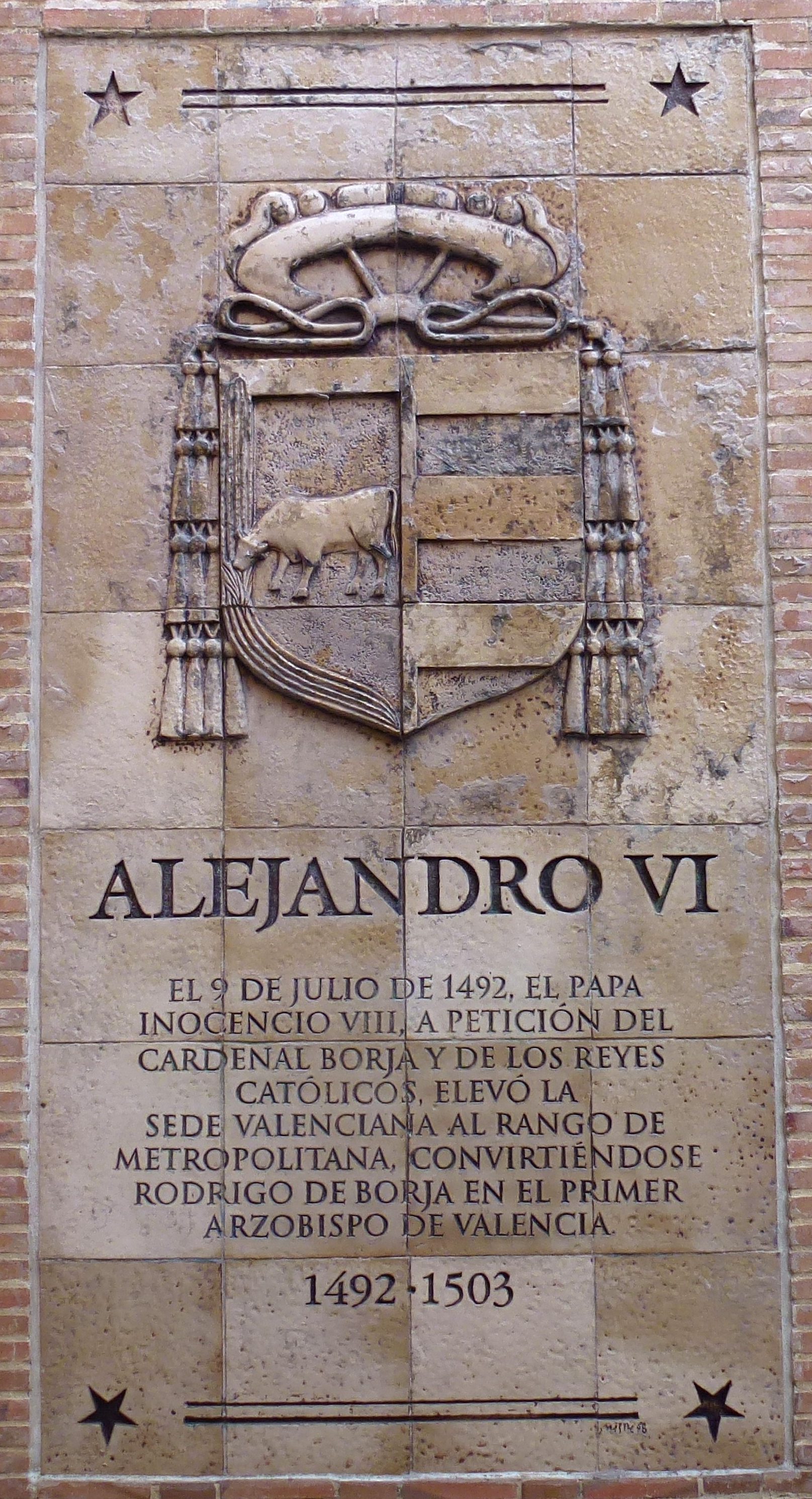|
Cardinal-nephew
A cardinal-nephew ( la, cardinalis nepos; it, cardinale nipote; es, valido de su tío; pt, cardeal-sobrinho; french: prince de fortune)Signorotto and Visceglia, 2002, p. 114. Modern French scholarly literature uses the term "cardinal-neveu'". was a cardinal elevated by a pope who was that cardinal's relative. The practice of creating cardinal-nephews originated in the Middle Ages, and reached its apex during the 16th and 17th centuries. The last cardinal-nephew was named in 1689 and the practice was abolished in 1692.Bunson, Matthew. 1995.Cardinal Nephew. ''The Pope Encyclopedia''. Crown Trade Paperbacks. . The word ''nepotism'' originally referred specifically to this practice, when it appeared in the English language about 1669. From the middle of the Avignon Papacy (1309–1377) until Pope Innocent XII's anti-nepotism bull (a papal charter), '' Romanum decet pontificem'' (1692), a pope without a cardinal-nephew was the exception to the rule. Every Renaissance pope who crea ... [...More Info...] [...Related Items...] OR: [Wikipedia] [Google] [Baidu] |
List Of Cardinal-nephews
A cardinal-nephew is a cardinal elevated by a pope who was his uncle, or more generally, his relative. The practice of creating cardinal-nephews originated in the Middle Ages, and reached its apex during the 16th and 17th centuries.Bunson, Matthew. 1995.Cardinal Nephew" ''The Pope Encyclopedia''. Crown Trade Paperbacks. . From the Avignon Papacy (1309–1377) until Pope Innocent XII's anti-nepotism bull, ''Romanum decet pontificem'' (1692), nearly every pope who appointed cardinals appointed at least one relative to the College of Cardinals,Until Pope Innocent XII, the only exceptions were popes who did not appoint the cardinals at all (Pope Pius III, Pope Marcellus II, Pope Urban VII, Pope Leo XI) and Pope Adrian VI (who appointed only one cardinal). including every Renaissance-era pope. Although nephews were the most common relation to be elevated to the College, other family members include (legitimate, illegitimate, or adopted) sons and grandsons, brothers, grandnephews, c ... [...More Info...] [...Related Items...] OR: [Wikipedia] [Google] [Baidu] |
Nepotism
Nepotism is an advantage, privilege, or position that is granted to relatives and friends in an occupation or field. These fields may include but are not limited to, business, politics, academia, entertainment, sports, fitness, religion, and other activities. The term originated with the assignment of nephews to important positions by Catholic popes and bishops. Nepotism has been criticized since the ancient times by several philosophers, including Aristotle, Valluvar, and Confucius, condemning it as both evil and unwise. Origins The term comes from Italian word ''nepotismo'',"Nepotism." Dictionary.com. Retrieved 20 June 2013. which is based on Latin root ''nepos'' meaning nephew. Since the ... [...More Info...] [...Related Items...] OR: [Wikipedia] [Google] [Baidu] |
Gregory IX
Pope Gregory IX ( la, Gregorius IX; born Ugolino di Conti; c. 1145 or before 1170 – 22 August 1241) was head of the Catholic Church and ruler of the Papal States from 19 March 1227 until his death in 1241. He is known for issuing the '' Decretales'' and instituting the Papal Inquisition, in response to the failures of the episcopal inquisitions established during the time of Pope Lucius III, by means of the papal bull '' Ad abolendam'', issued in 1184. The successor of Honorius III, he fully inherited the traditions of Gregory VII and of his own cousin Innocent III and zealously continued their policy of papal supremacy. Early life Ugolino (Hugh) was born in Anagni. The date of his birth varies in sources between c. 1145 and 1170. He received his education at the Universities of Paris and Bologna. He was created Cardinal-Deacon of the church of Sant'Eustachio by his cousin Innocent III in December 1198. In 1206 he was promoted to the rank of Cardinal Bishop of Ostia ... [...More Info...] [...Related Items...] OR: [Wikipedia] [Google] [Baidu] |
Alexander VI
Pope Alexander VI ( it, Alessandro VI, va, Alexandre VI, es, Alejandro VI; born Rodrigo de Borja; ca-valencia, Roderic Llançol i de Borja ; es, Rodrigo Lanzol y de Borja, lang ; 1431 – 18 August 1503) was head of the Catholic Church and ruler of the Papal States from 11 August 1492 until his death in 1503. Born into the prominent Borgia family in Xàtiva under the Crown of Aragon (now Spain), Rodrigo studied law at the University of Bologna. He was ordained deacon and made a cardinal in 1456 after the election of his uncle as Pope Callixtus III, and a year later he became vice-chancellor of the Catholic Church. He proceeded to serve in the Curia under the next four popes, acquiring significant influence and wealth in the process. In 1492, Rodrigo was elected pope, taking the name Alexander VI. Alexander's papal bulls of 1493 confirmed or reconfirmed the rights of the Spanish crown in the New World following the finds of Christopher Columbus in 1492. During the ... [...More Info...] [...Related Items...] OR: [Wikipedia] [Google] [Baidu] |
Romanum Decet Pontificem
''Romanum decet Pontificem'' (named for its Latin incipit: "it befits the Roman Pontiff") is a papal bull issued by Pope Innocent XII (1691–1700) on June 22, 1692, banning the office of cardinal-nephew, limiting his successors to elevating only one cardinal relative, eliminating various '' sinecures'' traditionally reserved for cardinal-nephews and capping the stipend or endowment the nephew of a pope could receive to 12,000 scudi The ''scudo'' (pl. ''scudi'') was the name for a number of coins used in various states in the Italian peninsula until the 19th century. The name, like that of the French écu and the Spanish and Portuguese escudo, was derived from the Latin '' .... ''Romanum decet Pontificem'' was later incorporated into the Code of Canon Law of 1917 in canons 240, 2; 1414, 4; and 1432, 1. In 1694, Innocent XII's series of reforms was capped off with an expensive campaign to eliminate the venality of offices while reimbursing their current holders. However, ... [...More Info...] [...Related Items...] OR: [Wikipedia] [Google] [Baidu] |
Cardinal Secretary Of State
The Secretary of State of His Holiness (Latin: Secretarius Status Sanctitatis Suae, it, Segretario di Stato di Sua Santità), commonly known as the Cardinal Secretary of State, presides over the Holy See's Secretariat of State, which is the oldest and most important dicastery of the Roman Curia. The Secretariat of State performs all the political and diplomatic functions of the Holy See and the Vatican City. The Secretary of State is sometimes described as the prime minister of the Holy See, even though the nominal head of government of Vatican City is the President of the Pontifical Commission for Vatican City State. The Secretary of State is currently Cardinal Pietro Parolin. Duties The Cardinal Secretary is appointed by the Pope, and serves as one of his principal advisors. As one of the senior offices in the Roman Catholic Church, the secretary is required to be a cardinal. If the office is vacant, a non-cardinal may serve as pro-tem secretary of state, exercisin ... [...More Info...] [...Related Items...] OR: [Wikipedia] [Google] [Baidu] |
Favourite
A favourite (British English) or favorite (American English) was the intimate companion of a ruler or other important person. In post-classical and early-modern Europe, among other times and places, the term was used of individuals delegated significant political power by a ruler. It was especially a phenomenon of the 16th and 17th centuries, when government had become too complex for many hereditary rulers with no great interest in or talent for it, and political institutions were still evolving. From 1600 to 1660 there were particular successions of all-powerful minister-favourites in much of Europe, particularly in Spain, England, France and Sweden. The term is also sometimes employed by writers who want to avoid terms such as " royal mistress", "friend", "companion", or "lover" (of any gender). Several favourites had sexual relations with the monarch (or the monarch's spouse), but the feelings of the monarch for the favourite ran the gamut from simple faith in the favourite ... [...More Info...] [...Related Items...] OR: [Wikipedia] [Google] [Baidu] |
Cardinal (Catholicism)
A cardinal ( la, Sanctae Romanae Ecclesiae cardinalis, literally 'cardinal of the Holy Roman Church') is a senior member of the clergy of the Catholic Church. Cardinals are created by the ruling pope and typically hold the title for life. Collectively, they constitute the College of Cardinals. Their most solemn responsibility is to elect a new pope in a conclave, almost always from among themselves (with a few historical exceptions), when the Holy See is vacant. During the period between a pope's death or resignation and the election of his successor, the day-to-day governance of the Holy See is in the hands of the College of Cardinals. The right to participate in a conclave is limited to cardinals who have not reached the age of 80 years by the day the vacancy occurs. In addition, cardinals collectively participate in papal consistories (which generally take place annually), in which matters of importance to the Church are considered and new cardinals may be created. Cardin ... [...More Info...] [...Related Items...] OR: [Wikipedia] [Google] [Baidu] |
Pope Anastasius IV
Pope Anastasius IV ( – 3 December 1154), born Corrado Demetri della Suburra, was head of the Catholic Church and ruler of the Papal States from 8 July 1153 to his death in 1154. He is the most recent pope to take the name "Anastasius" upon his election. Early life He was a Roman, son of Benedictus de Suburra, probably of the family of Demetri, and became a secular clerk. He was created cardinal-priest of S. Pudenziana by Pope Paschal II no later than in 1114. In 1127 or 1128, Pope Honorius II promoted him to the suburbicarian See of Sabina. He was probably given this position for siding with Honorius II during a dispute over the appointment of a new abbot of Farfa. He had taken part in the double papal election of 1130, had been one of the most determined opponents of Antipope Anacletus II and, when Pope Innocent II fled to France, had been left behind as his vicar in Italy. At the time of his election to the papacy in July 1153, he was Dean of the College of Cardinals and ... [...More Info...] [...Related Items...] OR: [Wikipedia] [Google] [Baidu] |
Alphonsus Ciacconius
Don Alphonsus Ciacconius (born shortly before 15 December 1530, Baeza - died 14 February 1599, Rome) was a Spanish Dominican scholar in Rome. His name is also spelt as Alfonso Chacón and Ciacono. Chacón is known mainly for two of his works: ''Historia utriusque belli dacici a Traiano Caesare gesti'' (Rome, 1576), and ''Vitae, et res gestae pontificum romanorum et S.R.E. Cardinalium ab initio nascentis ecclesiae usque ad Clementem IX. P.O.M. Alphonsi Ciaconii Ordinis Praedicatorum & aliorum opera descriptae'' (Rome, 1601). Works Chacón was an expert on ancient Graeco-Roman and Paleo-Christian epigraphy, the Medieval paleography and manuscripts, besides the history of the papacy. He named the tinctures after their Latin initials. Or (gold) was designated by A (aurum), argent (silver) or white, respectively by a (argentum), azure (blue) with c (caeruleus), gules (red) by r (rubeus), and vert (green) by v (viridis). Though the sign for sable (black) (niger) was not present in ... [...More Info...] [...Related Items...] OR: [Wikipedia] [Google] [Baidu] |
Renaissance Papacy
The Renaissance Papacy was a period of papal history between the Western Schism and the Reformation. From the election of Pope Martin V of the Council of Constance in 1417 to the Reformation in the 16th century, Western Christianity was largely free from schism as well as significant disputed papal claimants. There were many important divisions over the direction of the religion, but these were resolved through the then-settled procedures of the papal conclave. The popes of this period were a reflection of the College of Cardinals that elected them. The College was dominated by cardinal-nephews (relatives of the popes that elevated them), crown-cardinals (representatives of the Catholic monarchies of Europe), and members of the powerful Italian families. There were two popes each from the House of Borgia, House of della Rovere, and House of Medici during this period. The wealthy popes and cardinals increasingly patronized Renaissance art and architecture, (re)building the landma ... [...More Info...] [...Related Items...] OR: [Wikipedia] [Google] [Baidu] |




.jpg)

